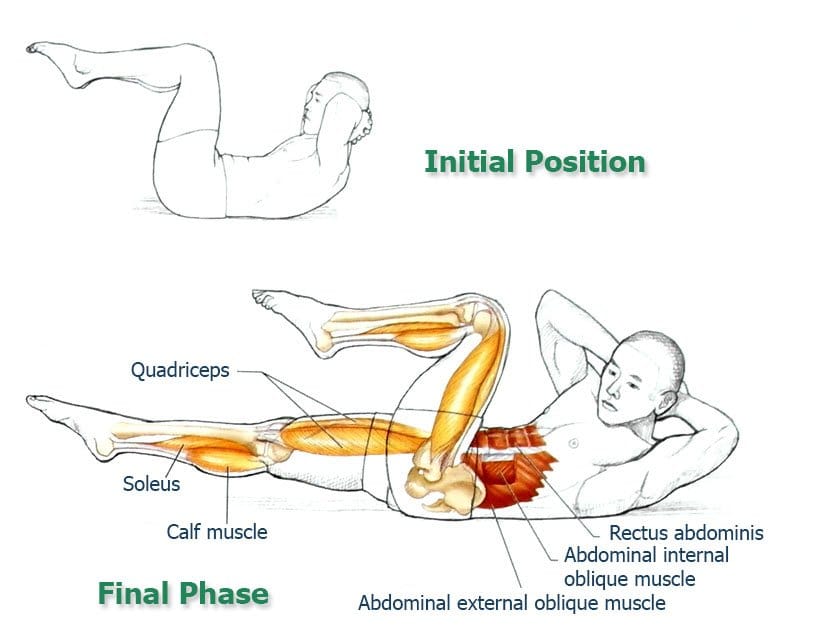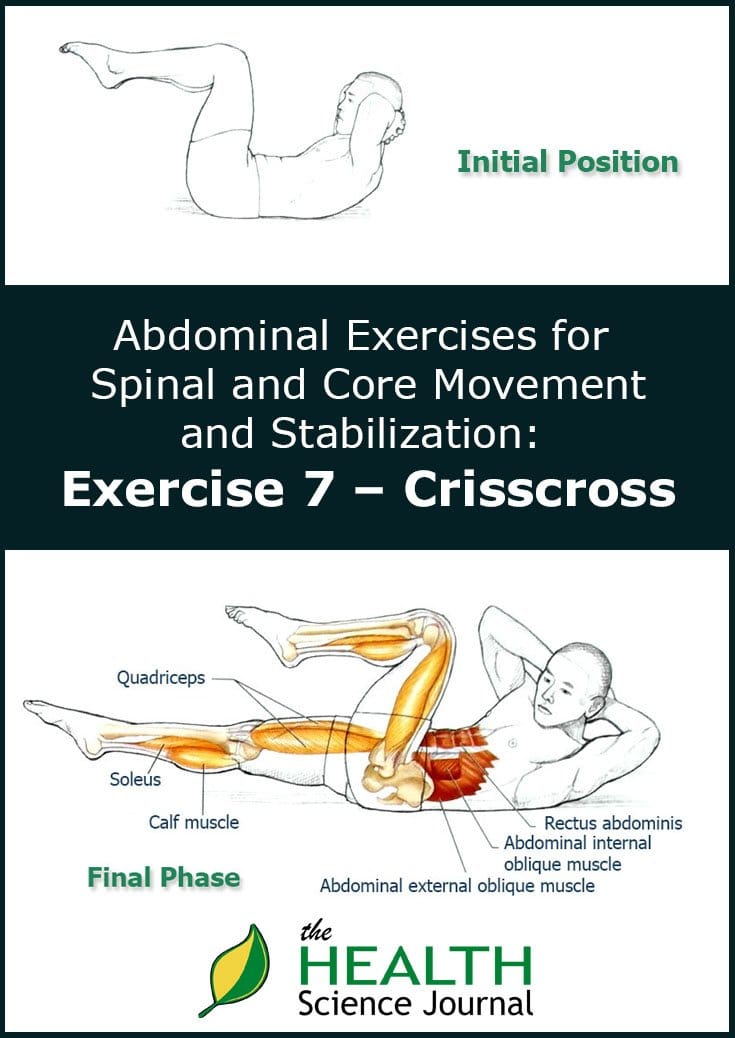The Crisscross exercise is a demanding core exercise that strengthens your abs and lower back while providing spinal and core stability. By learning the Crisscross exercise, you will have a challenging move that works your core and abs and betters your back and posture.
The series so far:
- Exercise #1: Leg Circle
- Exercise #2: Roll-Up
- Exercise #3: Hundred
- Exercise #4: One Leg Stretch
- Exercise #5: Stretching the Hamstring
- Exercise #6: Double Leg Stretch
- Exercise #7: Crisscross (you are here)
- Final Exercise: Teaser
The Crisscross exercise advances the challenge of One Leg Stretch by adding rotation of the torso while maintaining flexion of the spine.
Crisscross Exercise

Initial position. Lie on your back with the head and shoulder blades off the mat in a chest lift position; legs are in a tabletop position with knees slightly closer to the chest and, as usual, both feet gently pointed outwards. You arms are bent with the fingers intertwined behind your head and elbows to the sides:
- Exhale and straighten one leg while simultaneously rotating the trunk toward the opposite bent knee (as in the illustration above);
- Inhale and begin to straighten the bent leg while bending the straight leg and rotating the upper torso back to the center;
- Exhale and remember to rotate the trunk toward the opposite side while switching the legs. Make sure to fully straighten the one leg and bend the other toward the chest. Repeat the movement 5 times on each leg for a total of 10 times. Finishing each switch of the legs and chest rotation with a percussive exhale.
Make Sure You:
- As we already mentioned in the closely related One Leg Stretch, firmly pull the abdominals in toward the spine in the initial position and maintain a solid contact of the lower back with the mat throughout;
- As the obliques, and potentially the transversus abdominis, rotate the chest, keep the opposite side of the pelvis back, maintaining even contact with the mat;
- Use the abdominal muscles to maintain a C curve so that the chest stays lifted as it rotates;
- While maintaining core stability, dynamically reach out one leg, using the hip extensors, knee extensors and the foot plantar flexors to achieve the desired leg line;
- Maintain a neutral position of the shoulder blades, preventing them from rising throughout;
- Mental image: when straightening the leg out in space, imagine as if a string were attached to the toe, pulling it out to coordinate the use of the hip flexors, which keep the leg from falling down, and then begin to bring the outstretched leg up toward the chest.
Additional Notes
The Crisscross exercise is closely related to One Leg Stretch, but offers a greater challenge to the abdominals because of the position of the hands behind the head. Additionally, the rotation adds more stability challenges and increases the exertion of the obliques and transversus abdominis and requires a fine-tuned technique.
These muscles are crucial for stabilizing the spine before movement of the limbs or before impact in activities such as lifting objects, running, and jumping. Maintaining the C curve while bringing one side of the rib cage toward the opposite hip can help with the desired activation.
One common mistake is letting the rib cage shift to one side or bend toward one side of the pelvis. Always try to rotate around a central axis and avoid shifting movements.


